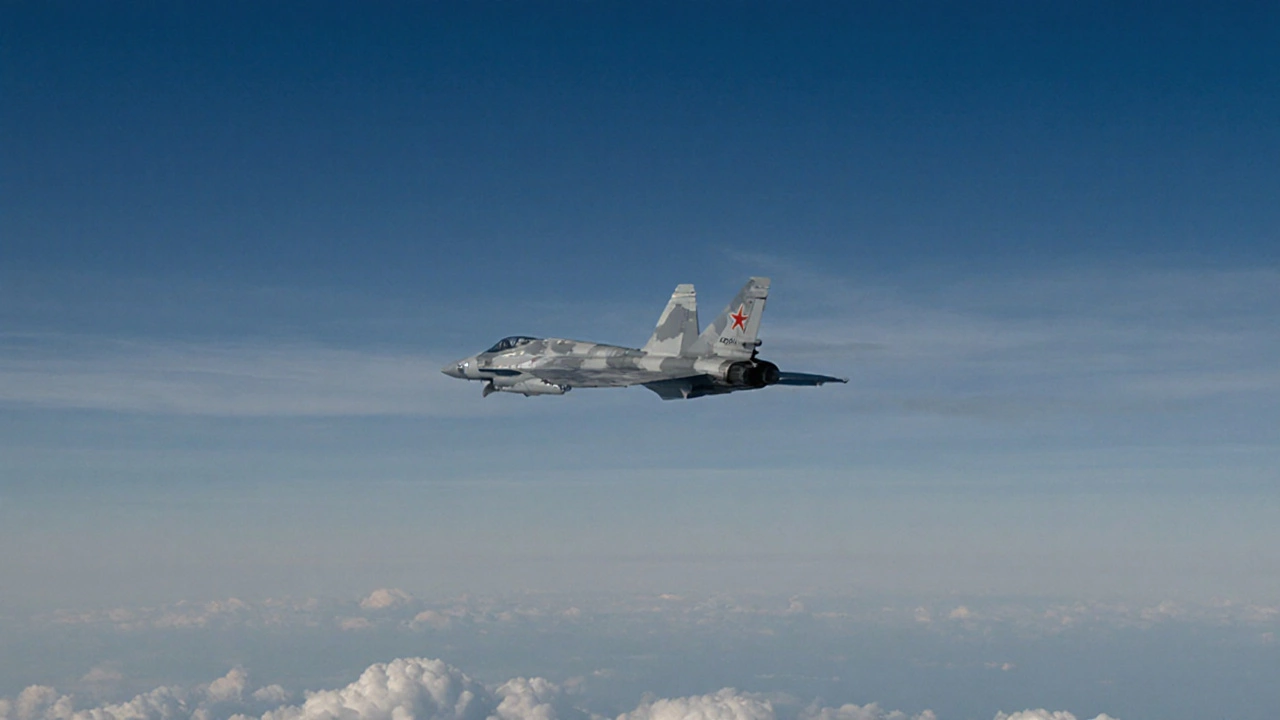RAF Pilots Brace for Russian Jet Incursions – What May Come Next
 Sep, 26 2025
Sep, 26 2025
Rising Tensions in European Skies
In the past few weeks, the continent’s airspace has become a chessboard for high‑speed jets. Russian fighters have slipped into the monitored zones of Poland, Estonia, Romania and Latvia, sparking an almost nightly scramble of NATO aircraft. British Foreign Secretary Yvette Cooper has put the UK on a defensive footing, stating outright that Britain will "confront" any Russian aircraft that dares to breach alliance borders.
The most talked‑about episode unfolded over Estonia, where three Russian MiG‑31s lingered for about twelve minutes inside Estonian airspace. Italian F‑35s took off within minutes, performed a textbook intercept, and escorted the intruders out of the Tallinn region. A similar drama played out near Latvia, where two Hungarian Gripen jets intercepted a mixed Russian formation that included a Su‑30, a Su‑35 and three MiG‑31s, all operating uncomfortably close to the Latvian border.
These fly‑by incidents are not isolated. NATO’s air command reports a steady uptick in Russian surveillance flights along NATO’s eastern flank, each one testing the alliance’s reaction times and rules of engagement. The pattern suggests a calculated pressure campaign rather than random blunders.
What Intercepts Really Involve
Retired Air Marshal Greg Bagwell, a veteran of NATO’s air defense, explains that an intercept is far from a simple "fly past and hail" maneuver. Pilots must keep a tight visual on the intruding aircraft, constantly scanning for sudden turns, aggressive climbs, or any sign of hostile intent. "You’re never sure if the other side will try a risky maneuver to force the hand of the intercepting pilot," Bagwell warned.
Procedurally, NATO crews follow a strict script: they approach from behind and below, establish visual contact, and attempt radio communication on standard frequencies. If the foreign aircraft ignores commands, the escorting fighters may be ordered to escort it out, fire warning shots, or—in extreme cases—engage. The United States, represented by former President Donald Trump’s recent remarks, has signaled that NATO members have the authority to shoot down any Russian plane that violates sovereign airspace.
That declaration has sparked debate among defense analysts. Some argue that a shoot‑down could trigger a rapid escalation, turning a localized incident into a broader conflict. Others counter that a clear, decisive response might deter further provocations and reinforce NATO’s deterrence posture.
Beyond the political rhetoric, the pilots on the ground face a grueling reality. Night‑time intercepts, low‑visibility conditions, and the need to coordinate across multiple national command centers create a high‑stress environment. Training exercises have intensified, with NATO air forces conducting joint drills that simulate exactly these scenarios.
Meanwhile, the United Nations has convened emergency sessions to discuss the spate of violations, though concrete resolutions remain elusive. The diplomatic arena is catching up with the tactical one, as member states weigh the cost of a hardline stance against the risk of inadvertently inflaming an already volatile situation.
What’s clear is that the skies over Eastern Europe have become a barometer for the broader East‑West rivalry. As long as Russian aircraft continue to push the limits, RAF pilots, along with their allies, will remain on high alert, ready to react at a moment’s notice. The next encounter could set a precedent for how NATO deals with these airborne provocations, and whether Russian jets will think twice before crossing the line again.